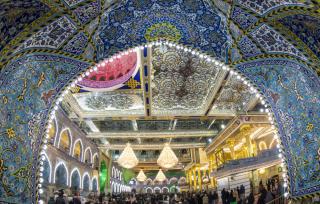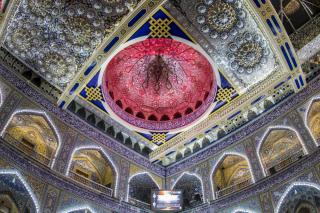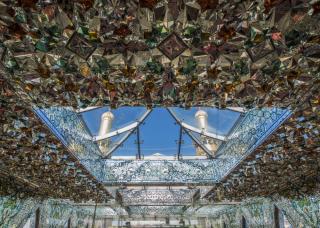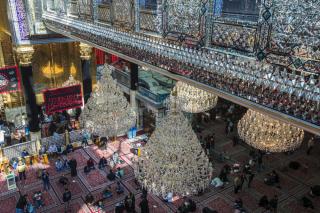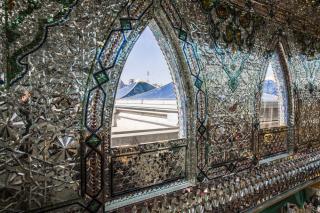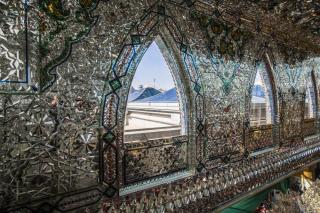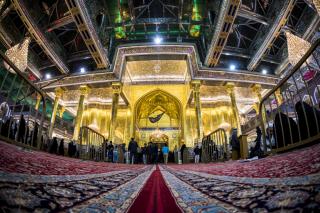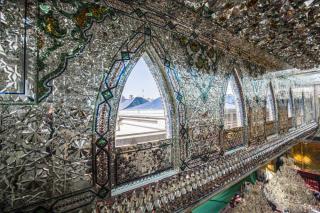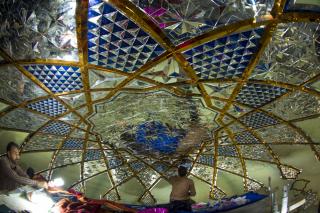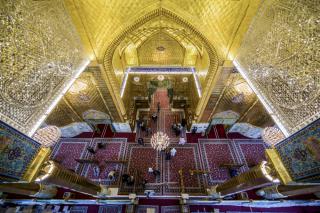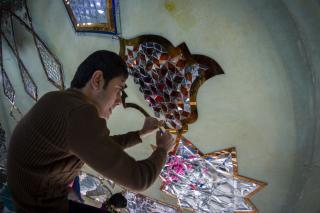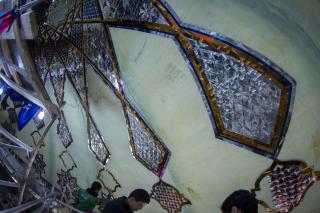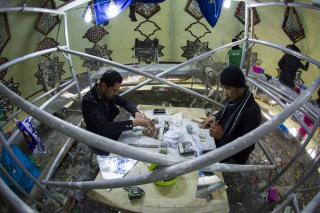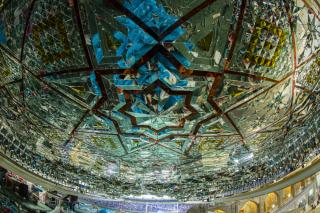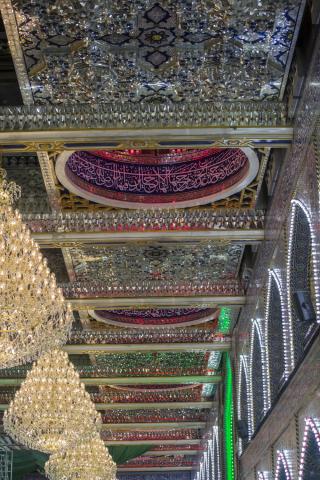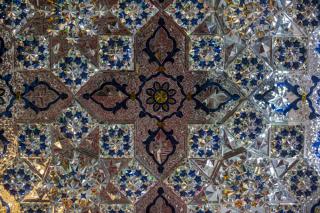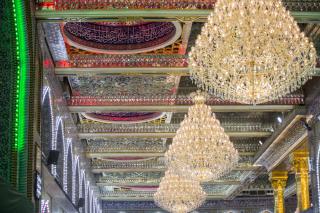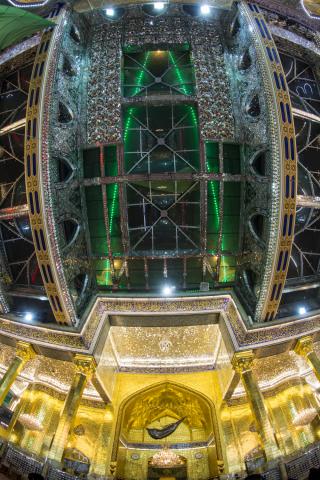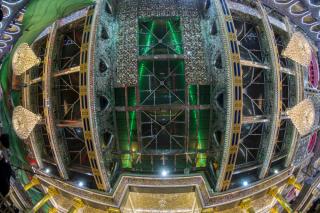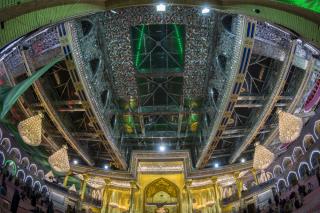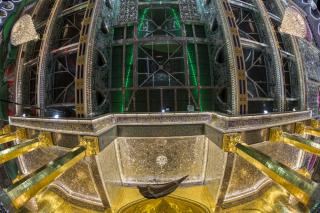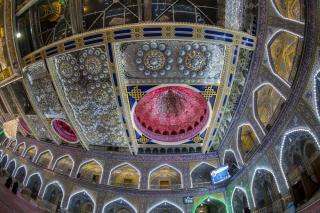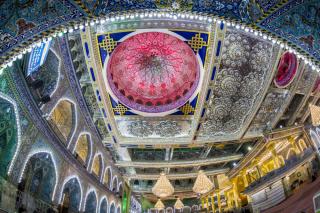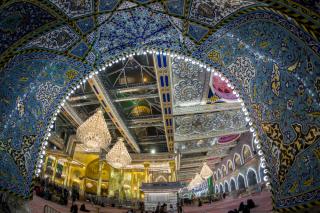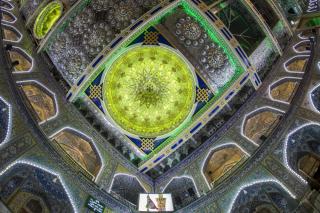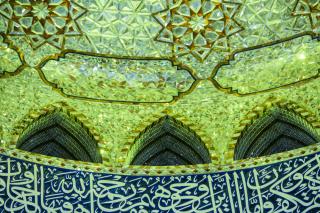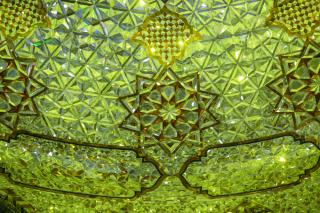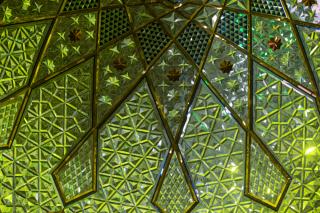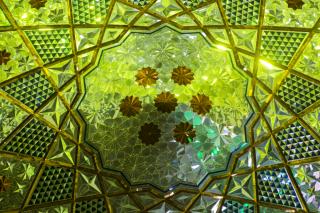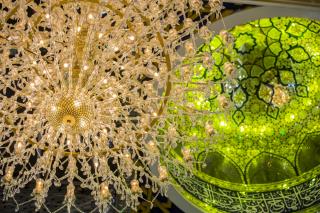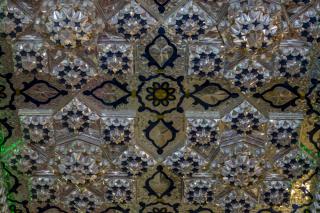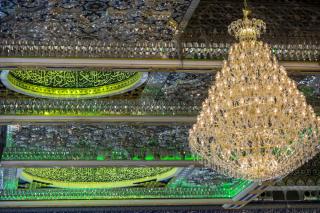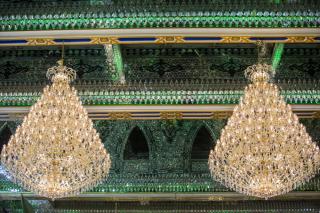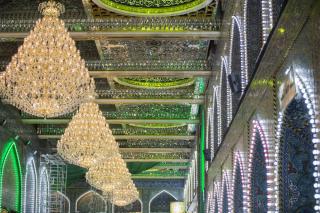The Head of Engineering Projects Department at the Al-Abbas's (p) holy shrine; Engineer Dea' Majeed Al-Sa'egh has announced the completion of the last stage of the shrine expansion project by ceiling the holy sanctuary of Aba Al-Fadl Al-Abbas (peace be upon him), by covering the secondary ceilings and interior decorations with cut mosaic mirrors, which ends the last pages of this project.
He added: "The Art of cut mosaic mirrors is one of the arts that the Iraqi artists excel in it throughout the decades, in particular that it has become an architectural identity of the shrines in Iraq and other Islamic countries. There are many artists and skilled workers in this handcraft in the Iraqi cities, especially the holy city of Karbala, therefore these works were entrusted to the specialized staff in this art."
Stating: "These works have started in February of 2013, coinciding with the works of the installation of the secondary ceilings pieces and interior decoration to cover them with these mirrors. The work started in the Easter side of the holy shrine in the side of al-'Alqami gate, noting that the work was divided to many parts according to the plan prepared in advance by the Iraqi designing and implementing company, including the covering process of the steel structures bridges and interior parts of the domes, after being covered with the [fibre glass] secondary ceilings."
Mr. Sa'egh explained: "It was taken into account in the choice of colors and mirrors' forms the harmony and symmetry with the architectural design of the holy shrine as a whole. The total area of the used glass was more than 10.000 square meters. Noting that these works take a great time because of the accuracy needed in the implementation because of the large number of the inscriptions and the technical complexity."
He continued: "The pasting works of the Belgian origin mirrors on the ceilings was conducted manually using resins instead of gypsum that were used in this art, with a thickness of 2 mm with a high-quality, characterized by constant color and its resistance to the harshest conditions. They were cut using the programmed cutting CNC machines according to the same engineering dimensions of the Muqarnas, and the resin used was of Holland, and has proven high efficiency through the conducted tests by the Iraqi executive company, which is a new artistic addition made to this project."

